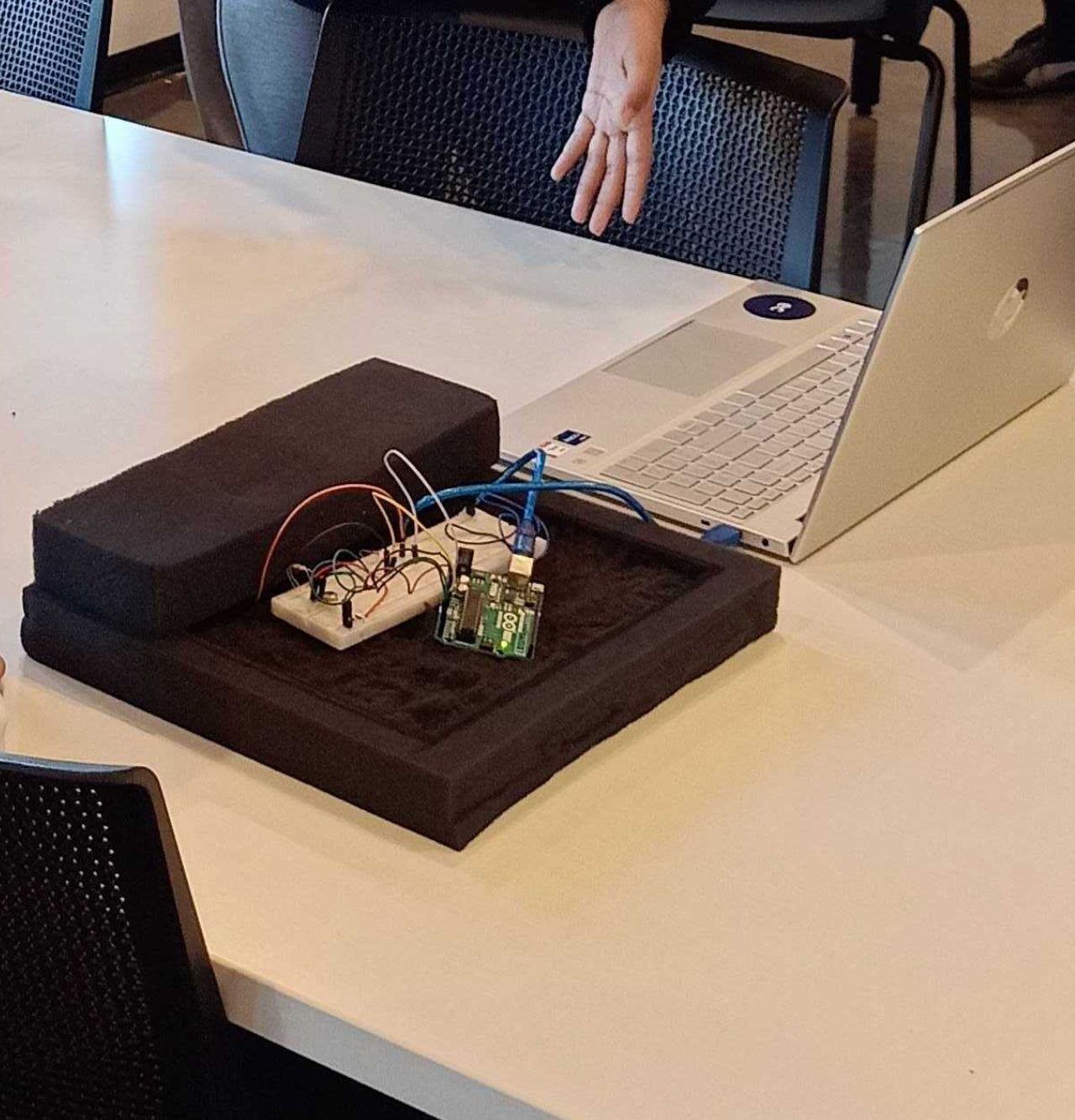Overview
Innovative Patient Care Solution
Leading a team of 5 professionals with a $20,000 budget, we are developing a groundbreaking technology aimed at reducing patient pressure injuries. This innovative system combines advanced sensor technology with real-time monitoring capabilities, creating a comprehensive solution for healthcare providers. Our collaboration with medical students and Carle Hospital ensures that our technology addresses real clinical needs while maintaining the highest standards of patient care.
Technology
Hardware Components & Implementation
The system utilizes an Arduino-based microcontroller interface integrated with high-precision sensors. Key hardware components include:
- Force Sensing Resistors (FSR502) for precise pressure measurement
- Melexis Contact-less Infrared Sensors (MLX90614ESF-AAA 5V) for temperature monitoring
- Custom-designed PCB boards for each of the 130 air pockets
- Solenoid valves for individual air pocket control
- Central air pump system with distributed pressure control


Implementation Approaches
We developed two implementation strategies:
Option 1: Modified Commercial Mattress
- Base: Medical-grade pressure relief mattress
- Modification: Custom stitching to create 130 individual air pockets
- Integration: Individual PCB placement on each air pocket
- Control: Dedicated valve system connected to central air pump
- Monitoring: Real-time sensor data processing for dynamic adjustment
Option 2: Custom-Built Solution
- Construction: Custom mattress fabrication using medical-grade materials
- Design: Optimized air pocket size and distribution
- Integration: Same sensor and control systems as Option 1
- Advantage: Greater control over design specifications
Software Architecture
Our software implementation includes:
- Real-time pressure monitoring system showing PSI measurements (16-17.4 PSI range)
- Custom-developed pressure sensor calibration algorithms
- Dynamic visualization interface for pressure mapping
- Automated valve control system based on sensor feedback
- Data logging and analysis modules for pattern recognition

Development Process
Collaborative Innovation
Our development process involves close collaboration with medical students and healthcare professionals, ensuring that our technology meets real clinical needs. The journey includes extensive testing, refinement, and validation phases, all supported by our partnership with Carle Hospital.
Key development aspects include:
• Integration of sensors with microcontroller interface
• Development of Python and C++ based data processing platform
• Implementation of machine learning algorithms
• Clinical testing and validation
• Iterative refinement based on medical feedback
Specifications
Technical Features
- Sensors: - FSR502 Pressure Sensors (130 units) - MLX90614ESF-AAA 5V Infrared Sensors - Operating range: 0-25 PSI - Response time: <10ms
- Control System: - Arduino Mega 2560 microcontroller - Custom PCB design for each air pocket - 130 individual solenoid valves - Central air pump with distributed control
- Software Stack: - Real-time pressure visualization (16-17.4 PSI range) - Custom C++ firmware for Arduino - Python-based data processing platform - Machine learning algorithms for pressure prediction - Web-based monitoring interface
- Physical Specifications: - 130 individually controlled air pockets - Medical-grade materials - Standard hospital bed dimensions - Modular design for easy maintenance
Results
Clinical Impact and Validation
Our technology has demonstrated significant potential in preventing pressure injuries, with early validation results showing promising outcomes. The support from Carle Hospital has been instrumental in refining our solution and establishing its clinical efficacy. The system's ability to provide real-time monitoring and preventative intervention represents a major advancement in patient care technology.
With continued development and refinement, our pressure injury prevention system is poised to make a significant impact in healthcare settings, improving patient outcomes and reducing the burden on healthcare providers.